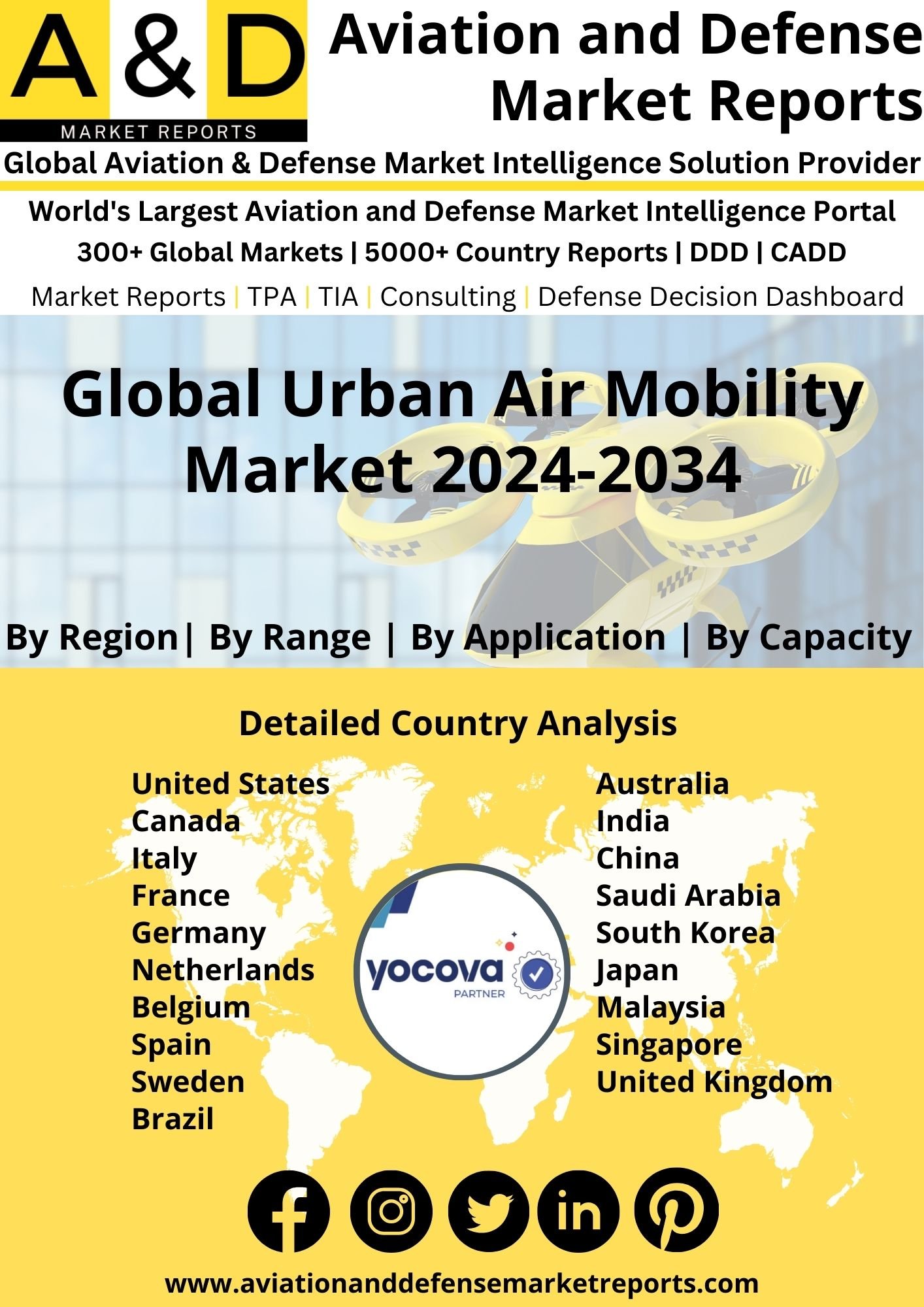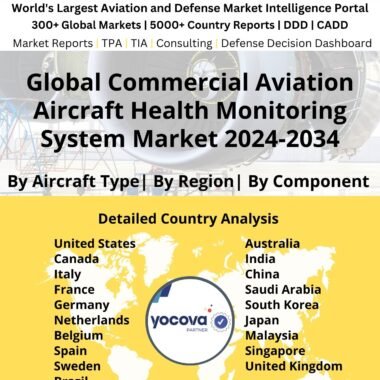Description
Urban Air Mobility Market
Urban air mobility (UAM) uses small and medium sized highly automated aircraft to transport people or goods at lower altitudes in urban and suburban regions that have grown as a result of traffic congestion. It typically refers to both established and developing technology, such as conventional helicopters, vertical-takeoff and landing (VTOL) aircraft, electrically propelled VTOL aircraft, and unmanned aerial vehicles (UAVs) (UAVs). Multiple electric-powered rotors or fans are used for lift and propulsion on these aircraft, and fly-by-wire technologies are used to operate them. Since the early days of powered flight, inventors have investigated ideas for urban air mobility. Urban air mobility is a part of the Advanced Air Mobility (AAM) concept, which encompasses more use cases than only intracity passenger transportation.
Public approval of UAM depends on a number of variables, including but not limited to security, social equality, noise, energy consumption, and safety. Safety concerns include the potential for flights beyond of authorized airspace, close proximity to people and/or buildings, critical system failures or loss of control, and hull loss, and they overlap with the majority of present aircraft risks. Cyber security risks also arise with autonomous or remote-piloted aircraft. Two important elements that affect how the public perceives eVTOL aircraft vehicles employed in UAM applications are the type and volume of noise produced by aircraft and rotorcraft. The physical safety of passengers in the absence of crew members and the cyber security of the urban air mobility vehicles and the systems that control it are two specific security concerns.
Any city faces a significant problem while putting in place a suitable UAM infrastructure. Due to the necessity of picking up or dropping off passengers in densely populated city districts, vertiports must be integrated into the architecture and infrastructure of the existing city, ensuring quick but secure boarding and disembarking. The vertiports must be connected to other mobility options, such as first- and last-mile transit, in order to ensure a seamless journey. The vertiport design must also be created in close coordination with the aircraft because several factors, like as the size of the landing platform or operating needs like charging equipment, are affected. Authorities at the state and local levels will probably impose operator and company licensing requirements for air taxi and metro operations. Scalable autonomous use cases for eVTOLs will necessitate automated fleet management software and related protocols. A successful system of traffic control for autonomous eVTOL operations needs to have the UAM Traffic Management (UTM) technological specifications, operational protocols, and supporting infrastructure and technology. To fly in airspace with a variety of cooperative, non-cooperative, and autonomous traffic and to be able to safely deconflict eVTOLs from this traffic, eVTOL aircrafts will need an integrated, automated system for UAM traffic management. For the local community’s health, acceptable noise levels and the ensuing noise abatement techniques must be created.
Major Factors Urban Air Mobility Market Growth
The increasing population in metropolitan cities is causing congestion of existing transport infrastructure such as roads and railways. The continuous movement of rural population to urban and sub urban locations will cripple the transport infrastructure in the near future. There is increasing demand for alternative and sustainable transport solution that will ease traffic congestion and decrease the transit time to and from a location. This is one of the primary factors for federal and state governments across the world to explore, invest and development credible advanced air mobility (AAM) solutions.
Trends Influencing the Urban Air Mobility Market Size
Whatever battery technologies turn out to be useful for eVTOL aircraft flying, they will all need to meet the stringent certification standards set by the FAA and other aviation regulators. Battery manufacturers will be forced to spend a lot of time and money to get their products into civil aircraft as a result of these regulations. Extremely quick charging and high-power cell discharge are necessary for eVTOLs. The high load circumstances at takeoff and landing necessitate very careful thermal control for electric aircraft batteries. Manufacturers will need to implement containment and propagation measures to prevent the battery from harming the vehicle’s structures and the aircraft from potential battery failures. Hence advanced in battery and electric propulsion technology will be key to the growth of the urban air mobility market.
Urban Air Mobility Market Forecast & Dynamics
The regulatory process finds it difficult to keep up with the rate of innovation and demands from the business community, many of whom are ignorant of aviation and the regulatory framework surrounding it. The rule-making process is essentially collaborative and calls for participation from the public, review by the public, and adherence to the Administrative Procedures Act. For something like UAM, which is a complex and multifaceted subject requiring many rulemakings and Part revisions, this results in a drawn-out process. In comparison to the conventional manned aircraft environment, the UAM and UAS sectors are considerably larger and more dispersed. The ecosystem is bigger than it has ever been and comprises a considerably greater range of corporate sophistication. As a result, some traditional business models would no longer be viable, necessitating the creation of fresh approaches to support the ecosystem’s growth and the safe operation of unmanned aircraft in urban settings.
Urban Air Mobility Market Analysis for Recent Developments
United Airlines has signed a conditional purchase deal for 200 four-seat electric aircraft plus 200 options, with the first deliveries anticipated as early as 2026. Eve Air Mobility is an electrical vertical takeoff and landing (eVTOL) aircraft business based in Melbourne, Florida, in the United States. Founded in 2020, Eve Air Mobility is a stand-alone division of Embraer’s American affiliate EmbraerX. According to the terms of the agreement, the parties expect to collaborate on further tasks, such as research on the creation, utilization, and deployment of Eve’s aircraft and the ecosystem for urban air mobility (UAM).
The lift-plus-cruise concept of Eve’s design makes use of traditional fixed wings, rotors, and pushers to enable safety, efficiency, reliability, and certifiability. The vehicle is said to have a range of 60 miles (100 kilometers) and reduce noise levels by 90% when compared to current conventional aircraft. In addition, Eve is developing a fresh approach to air traffic control for the UAM sector’s safe expansion. This software is anticipated to function with the same level of safety as Embraer’s current air traffic management software and to be a crucial strategic tool for the expansion of the entire sector.
A startup called V-Space (official site) constructed Korea’s first UAM (Urban Air Transportation) with the goal of using its eVTOL all-electric vehicle to carry passengers or payloads weighing up to 120 kg. It is a vertical take-off and landing vehicle with a quadcopter design, as its name suggests. It resembles a tiny helicopter with a seat for one person and a drone. With a top speed of 60 mph, eVTOL can travel over a 40-mile distance while staying slightly below the speed limits on most US highways. The absence of traffic jams is, of course, the primary benefit, particularly in an emergency. The company does, however, have a brand-new, sleek design called the V Speeder-X that appears to be much more aerodynamic and modern. The drone can carry 230 kg of payload, but it can now travel at 50 mph since one of its use cases is as an ambulance. Keep in mind that the flight lasts only around 20 minutes.
The V Speeder-X is much smaller than its competitors, such as the Volocopter, and requires a vertiport, or drone heliport, that is less than half the size. This allows it to land in more locations or accommodate more drones in the same landing area. Even cheaper, V-Space offers the V Speeder (non-X), which has a 120 kg capacity and a 62 mph top speed. It could be sold for roughly $38,000. For the next two years, the company has some very ambitious plans. It wants to do a flight demonstration at a major show in the first half of 2024, and it intends to use the CES 2024 event to meet global partners. V_Space has previously attended occasions such as the Dubai Airshow.
It would open a global branch by the middle of the year to begin its global expansion. Manufacturing will begin to cater to international markets in 2025, and sales and production will begin in precisely two years. V-Space asserts that its exclusive battery design offers significant competitive advantages, including a high Wh/Kg power density (higher than Tesla and Kona EVs), in addition to the flying vehicle and controls design. Moreover remarkable is the 40 C-rate’s power output. Lastly, V_Space claims that even in the event of a fire, its battery design makes it safer and that batteries won’t explode. To date, over half of the total revenue has come from the battery business.





